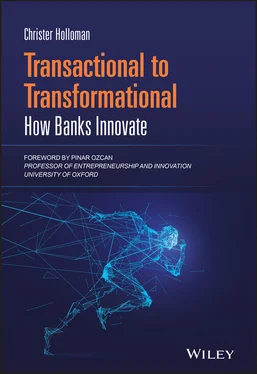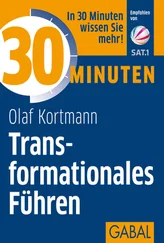‘Even when you're in “recovery mode” as business, you still have to think about innovation. The problem is that we react faster to threats than we do to opportunities.’
Juan Gomez Reino, Group Chief Technology Officer
Key to the success that the approach is now delivering is having the general principles of when and why they should partner at the heart of the process. By ensuring that all colleagues have a strong understanding of this rationale, they have been able to focus their efforts on higher potential spaces at an earlier stage of the pipeline. Coupling this clear purpose with pathfinder projects helps to translate the intention into action. More specifically, these projects will typically need to have a lot of executive sponsorship in order to carve out new organisational pathways that, once formed, will allow others to follow under more typical levels of sponsorship.
They divided their pipeline into four key stages based on the underlying activity required to take an opportunity from idea through to execution. This staged profile allowed them to create more targeted actions and to identify the ratio of opportunities moving from one stage to another. However, what they also came to realise is that the overall pipeline was only ever as efficient as the weakest link. They needed to spread and synchronise their improvement efforts across the pipeline. Perhaps most notably, having a robust early pipeline connected to a less mature execution capability can lead to disengagement and frustration. Developing the pipeline stages in‐sync helps to maintain balanced progress.
Organisations often develop dominant approaches to innovation and change delivery. Much like creating any new habit, their shift to partnering has required a shift in mindset, culture and capabilities. As well as being very clear on the strategic rationale for the change, they have also used a rolling agenda of communications to continue to reinforce the objectives and progress. These communications have targeted different audiences: from all colleagues through to more senior decision‐makers. Having the CVP representatives available to support the visibility and mandate of the fintech partnering agenda has also been crucial to driving the required change.
Whilst they have enhanced their partnering capabilities over the past two years, there is still a lot more that they need to do to get close to their target state.
As described, the largest constraint on their pipeline remains at the ‘engage’ stage. Their in‐flight technology plans are expected to support greater partnering activity by reducing the cost and complexity of integration. However, they need to do more still on the non‐technical side of third party engagements, especially to keep pace with the changing technology capabilities. They will approach this utilising systems thinking to articulate the journey and then working with stakeholders and policy‐owners to simplify or right‐size where relevant.
Furthermore, they will continue to assess their broader approach retrospectively. Whilst they now have several live partnerships and investments and they believe they have executed them in the right way, they will ultimately measure their success based on their customer and organisational benefits.
Chapter 2 BBVA: Invest through a corporate venture fund
Case: Propel Ventures

In February 2016, the new $250 million US fund Propel was officially launched as a fintech venture capital firm. The fund replaced BBVA Ventures, which was originally founded in 2012 to provide funding and expertise to promising technology companies disrupting the financial services industry. In establishing Propel as an independent entity, BBVA did something no other financial services company had done prior to this. BBVA considered that was its best option was to be seen as attractive as other non‐corporate investors for the startups that BBVA was interested in supporting. Being an independent fund gave Propel agility to make decisions faster and more effectively, which brought more and higher quality investments to the Group.
With this new structure, Propel was able to compete with the many established venture funds in Silicon Valley. Propel's focus is on early‐stage investment opportunities at the intersection of technology and finance. Since its formation, Propel's financial performance has outperformed its own expectations; four of its companies, between the Propel portfolio and BBVA Ventures legacy portfolio, have achieved unicorn status, including two IPO and three exits. Having a team on the ground in the centre of the US startup ecosystem has proved to be essential for BBVA.
Looking forward, the expectation for Propel is that it continues to invest in fintech businesses that provide strategic value and financial returns for BBVA. Thanks in large part to Propel, BBVA has a better insight into the talent and capital that can help it build projects to continue transforming itself.
Do you want more details about this case? Find additional highlights from these interviews at www.howbanksinnovate.com.

Javier Rodríguez Soler, CEO, BBVA USA
Javier Rodríguez Soler was named President and CEO of BBVA USA and US country manager for the BBVA Group in January 2019. Most recently he has been overseeing the acquisition of BBVA USA by PNC. He was previously BBVA Group's global head of Strategy and M&A, and before that he was managing director for Corporate and Investment Banking. Prior to BBVA, Rodríguez Soler was director of Investor Relations and director of Strategy and M&A at Endesa. He was also an engagement manager with McKinsey and Company.

Jay Reinemann, General Partner, Propel Venture Partners
As a partner at Propel, Jay has led investments in Coinbase, Neon and DocuSign, among others. Before BBVA spun off the fund and became a limited partner, Jay led BBVA Ventures including the bank's acquisition of Simple. Prior to Propel, Jay held several positions at Visa in digital transformation, emerging projects, and ecommerce. As head of the Visa Corporate Ventures and Strategic Alliances Group he led investments in information security, mobile and payments technology companies.

Ricardo Forcano, former CIO
Ricardo Forcano was with BBVA from 2011 until 2020, when he decided to leave the bank to start an academic research project. His last role in BBVA was Chief Information Officer and Global Head of Engineering and Organisation. Ricardo was a member of BBVA Group's Executive Committee and his responsibilities included the bank's technological architecture, the development of next‐generation systems and software, the operation of the infrastructure and security. Before that Ricardo was Head of Talent and Cultures and director of Business Development for Growth Markets. As Director of Corporate Strategy, he was responsible for the launch of Propel. Ricardo graduated from the Universidad de Zaragoza in 1995 (MA in Engineering) and has an MSc in Technology and Policy from Massachusetts Institute of Technology.
Читать дальше















